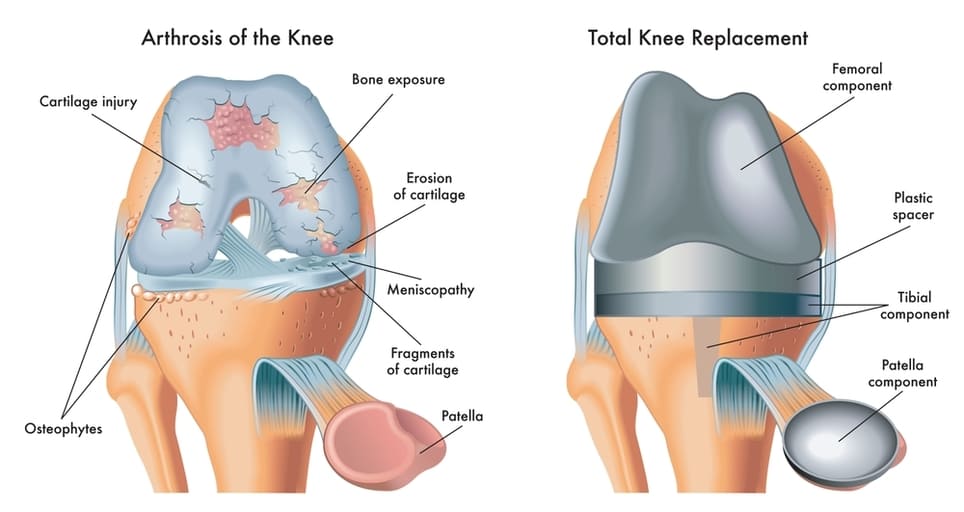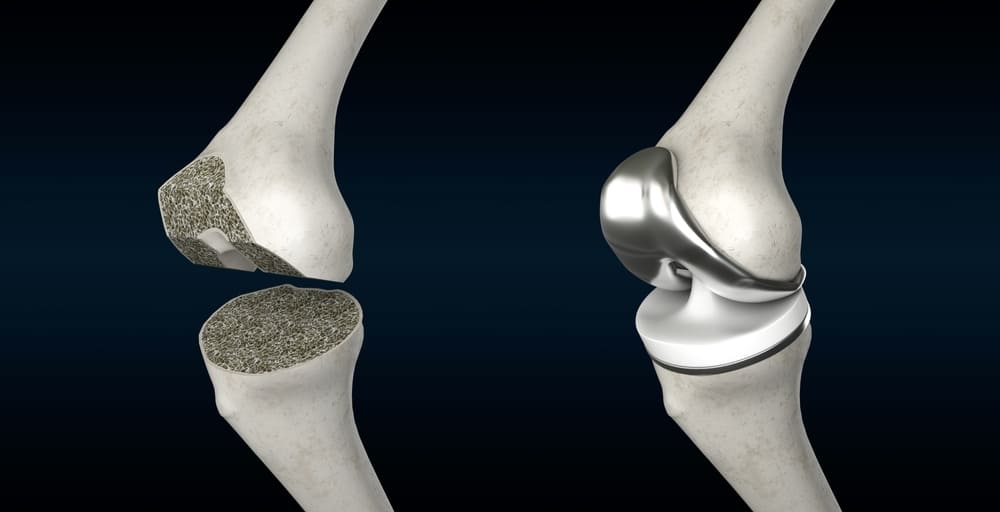VA Disability Rating for Knee Replacements
By Telemedica
1/18/2024
When it comes to veterans navigating the complexities of VA disability ratings, particularly concerning knee replacements, understanding the intricacies of the VA disability rating system is crucial.
In this guide, we will delve into the specifics of VA disability rating for knee replacements, shedding light on total knee replacement VA disability ratings and addressing common concerns, including the VA’s evaluation of knee replacement scars.
Let’s explore the key factors that influence these VA ratings and provide you with the knowledge you need to navigate the claims process with confidence.

Can I a Get VA Disability Rating for Knee Replacement?
Yes, the VA recognizes knee replacements stemming from service-related factors as qualifying VA disabilities.
If your knee condition is service-connected and necessitates a replacement, you will be granted a temporary 100% VA disability rating for knee replacement—for the initial four months post-operation.
Following this postoperative period, the VA conducts a reassessment of your condition, assigning a new VA rating accordingly.
In the case of a total knee replacement, a minimum knee replacement VA disability rating of 30% is awarded.
However, if you continue to experience pain or reduced functionality in the knee subsequent to the surgery, your rating may be higher, reflecting the extent of your impairment.
However, In order to be eligible for a VA disability rating for knee replacement, it’s crucial to establish a direct link between your condition and your military service.
Having a knee replacement alone is not sufficient, the key factor is demonstrating that the underlying issue is connected to your time in the military.
To establish service connection, you need to meet three requirements:
- Provide a medical diagnosis of your current disability
- Provide evidence of an injury or disease that occurred during your military service
- Establish a nexus (connection or link) between your in-service injury or disease and your present diagnosed disability through a competent medical evidence (e.g., a Nexus Letter)

Total Knee Replacement Disability Rating: Factors Considered
In determining the disability rating for total knee replacement, the VA considers the range of motion, pain, instability, and any additional complications resulting from the surgery.
The severity of these factors influences the final rating percentage assigned to the veteran.
It is crucial for veterans to provide detailed medical records and evidence to support their disability claim, including information about the surgery and its impact on their quality of life.

What is the VA Rating for Knee Replacement Scars?
The VA rating for knee replacement scars is typically 10%—unless your surgical scar is both unstable and painful, which would be rated at 20%.
VA rating for knee replacement scars involve assessing the size, location, and resulting impairment caused by the scar post-surgery. Typically, the evaluation considers the visibility and impact of the scar in terms of functionality and discomfort.
Factors such as the scar’s size, whether it causes pain or limitation in movement, and whether it affects the veteran’s ability to work or perform daily activities are taken into account.
A larger or more symptomatic scar might warrant a higher disability rating, especially if it significantly impairs the individual’s mobility or causes ongoing discomfort that affects their quality of life.
The rating process aims to fairly evaluate the scar’s impact on the veteran’s well-being and compensate accordingly for any resulting disability.
You should document your scars thoroughly, including photographs and medical records, to ensure accurate evaluation by the VA.

What is the Difference Between a Total and Partial Knee Replacement?
The main difference between a total and partial knee replacement lies in the extent of the surgery and the portion of the knee joint that is replaced.
In a total knee replacement, the entire knee joint is replaced with artificial components, including the femoral (thigh bone) and tibial (shin bone) components, as well as the patellar component (kneecap). This procedure is typically recommended for patients with widespread arthritis or significant damage across the entire knee joint.
On the other hand, a partial knee replacement, also known as unicompartmental knee replacement, involves replacing only the damaged portion of the knee joint while preserving the healthy parts. This option is suitable for patients with arthritis or damage limited to one specific compartment of the knee.
Unlike total knee replacement, partial knee replacement surgery is less invasive, preserves more natural bone, and often results in a quicker recovery time. The choice between total and partial knee replacement depends on the extent and location of the knee joint damage, as well as the patient’s overall health and medical history.
Conclusion
Understanding how to qualify for a VA disability rating for knee replacements is pivotal for veterans seeking support.
This guide has shed light on the complexities, emphasizing the initial 100% rating and the subsequent assessments post-surgery.
Establishing service connection remains key, requiring evidence linking the condition to military service, alongside meeting specific criteria.
Factors influencing total knee replacement ratings, including range of motion, pain, and complications, have been outlined, emphasizing the need for thorough medical records.
Additionally, the evaluation of knee replacement scars considers their impact on functionality and well-being.
The distinction between total and partial knee replacements clarifies the surgical variances, highlighting the importance of medical decisions based on individual circumstances.
Navigating VA disability ratings for knee replacements demands meticulous documentation and a clear understanding of how these ratings are determined. Armed with this knowledge, veterans can effectively pursue the support they deserve for service-related knee conditions.